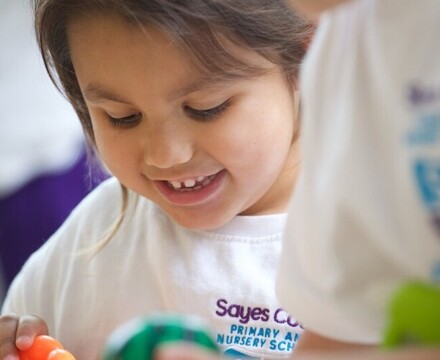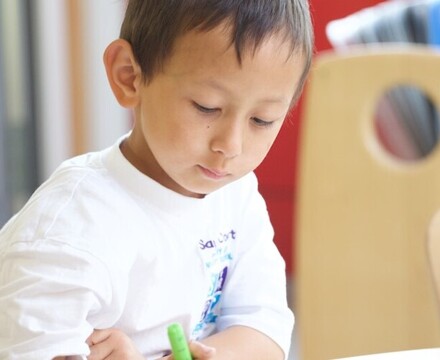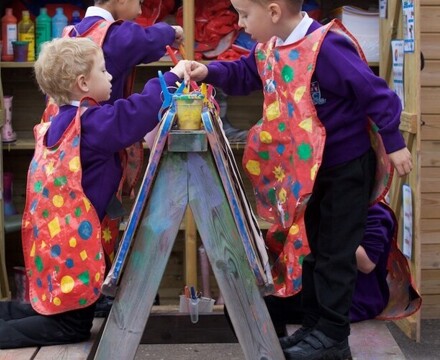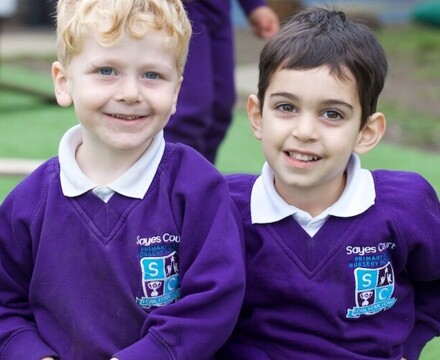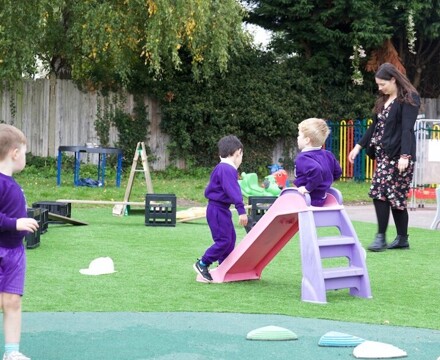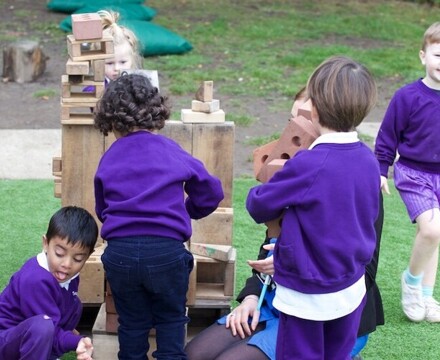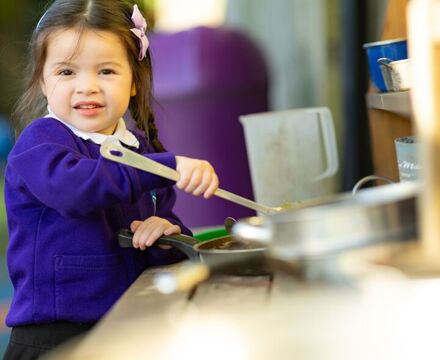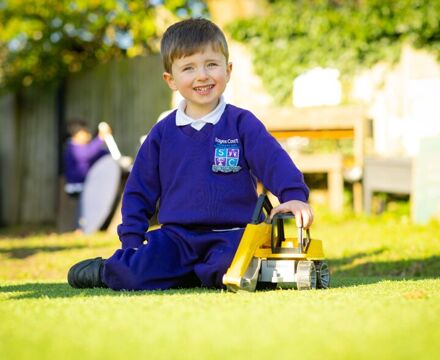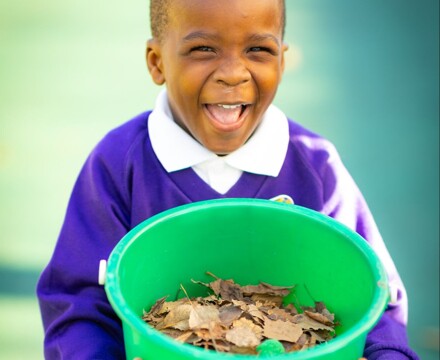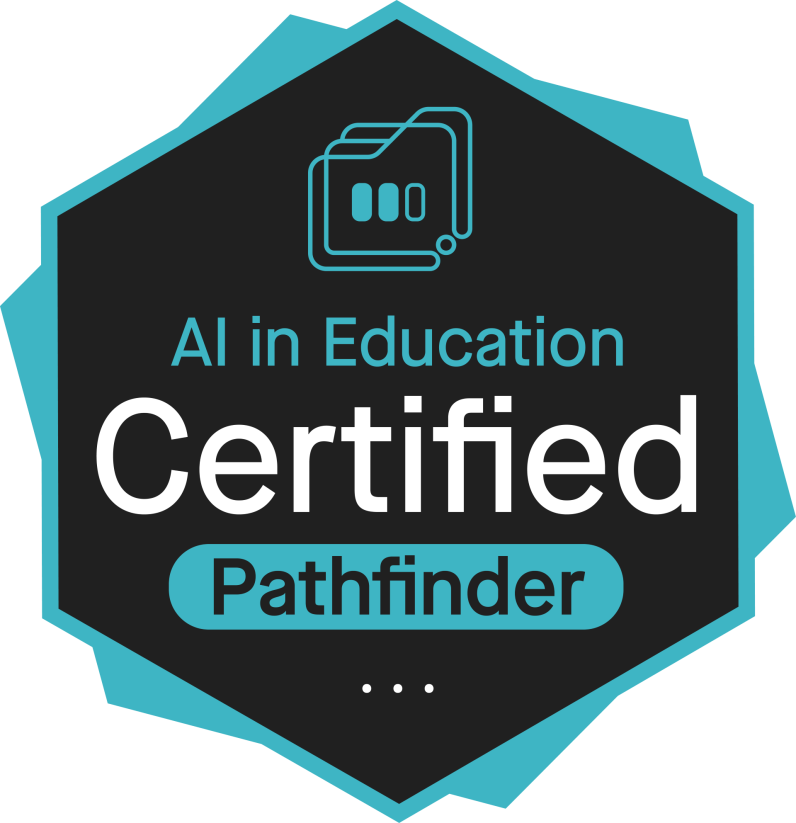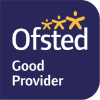EYFS RATED OUTSTANDING BY OFSTED NOVEMBER 2022

At Sayes Court Primary School, we believe that every child deserves the very best start to their educational journey. Our Nursery is a nurturing, stimulating, and joyful environment where children aged 2 - 4 begin to explore the world around them through play, discovery, and meaningful relationships.
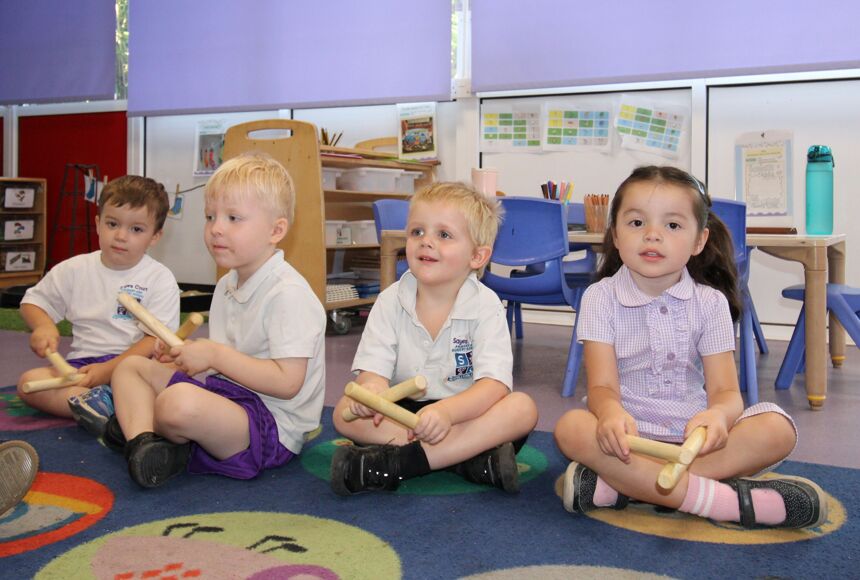
A Place to Grow and Flourish
Our Nursery is designed to support children’s development across all areas of learning, with a strong focus on:
· Personal, social and emotional development
· Communication and language
· Physical development
· Early literacy and numeracy skills
Children are encouraged to be curious, confident, and independent learners. Our experienced and caring staff create a safe and inclusive space where every child is valued and supported to thrive.
Learning Through Play
We follow the Early Years Foundation Stage (EYFS) framework, offering a rich and varied curriculum that blends structured activities with child-led exploration. Whether it's painting, building, storytelling, or outdoor adventures, every moment is an opportunity to learn.
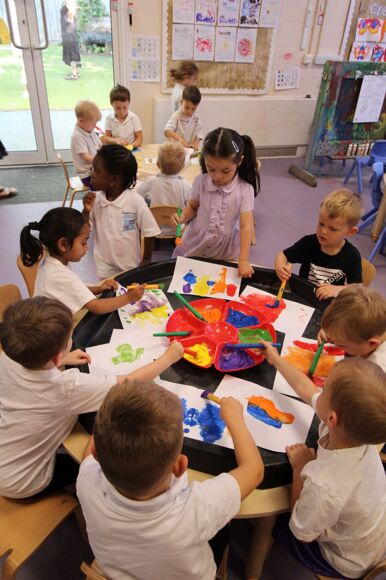
Our indoor and outdoor learning environments are thoughtfully arranged to spark imagination and creativity, helping children develop essential skills while having fun.
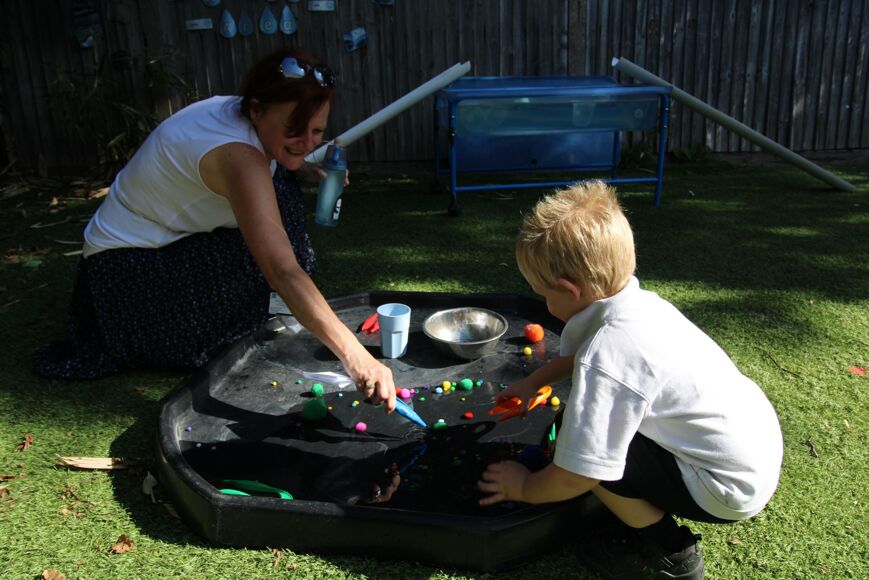
Experienced and Passionate Staff
Our dedicated Nursery team are experts in early childhood education. They work closely with families to ensure each child’s individual needs are met, building strong partnerships that support learning both at school and at home. Our Nursery is led by a fully qualified teacher, supported by teaching assistants with training and experience in working with our youngest pupils.
Flexible Sessions
We offer a split week, with Monday – Wednesday lunchtime, or Wednesday afternoon – Friday available. There are options for full-time provision depending on availability and eligibility. We also support families accessing 15 or 30 hours of funded childcare, making high-quality early education accessible to all.
Ready for Reception
Children who attend our Nursery benefit from a smooth transition into Reception, already familiar with our school routines, environment, and ethos. This continuity helps build confidence and sets the foundation for future success. Please be aware, though, that attendance at Nursery does not mean a child is guaranteed a space in Reception. Please see our Admissions Guidance for more information.
Interested in a Place?
We would love to welcome your child to our Nursery! To arrange a visit or find out more about availability and admissions, please contact our school office or visit our admissions page.
Key Information
On joining our Nursery your child will be assigned a Key Worker who will provide a supportive relationship for your child whilst they are away from home. Your child will take part in individual or small group focussed sessions with their Key Worker. The Key Worker will work closely with the Nursery Teacher to gather evidence about your child’s learning and make sure that they are flourishing in all areas including socially, academically, physically and spiritually.
We pride ourselves on giving your child the best early year’s education they can receive.
- A wonderful early year’s environment in which your 2 to 4-year-olds can grow and flourish
- Amazing staff who are friendly, energetic, caring and incredibly passionate about the EYFS
- 30 hours per week childcare (30-hour funding entitlement for eligible 3 and 4 year olds)
- FEET funding for eligible 2 year olds
- Open Monday to Friday during term time
- Two-and-a-half-day attendance pattern (Monday, Tuesday, Wednesday morning or Wednesday afternoon, Thursday, Friday)
- Freshly cooked lunches on site
Learning is shared with parents via Tapestry which is an online journal. To find out more about Tapestry and how you can use this as a parent, click on the link below:
Please contact the office on 01932-845093 if you would like any additional information, an application form or to arrange a tour of the Nursery and School. We look forward to welcoming you and your child!
Please note that children attending the Nursery at Sayes Court will not automatically qualify for a place in our Reception Class in the year that they turn 5. There is a separate admissions process to join Reception. Please visit our Admissions section of the website for further information.
Tax-Free Childcare Voucher Scheme:
The school is registered to accept the Tax-Free Childcare Voucher Scheme for the Nursery, Breakfast club and the school’s after school clubs.
If you wish to use this Government Scheme you will need to first register with a provider and the provider will contact the school direct. To find out more about the school please visit the Government site;
Get Tax-Free Childcare: step by step - GOV.UK (www.gov.uk)
Please can you advise the school of the activity you wish the payment to be allocated against when you have instructed your provider to make a payment.
We regret this scheme can not be used for school trips.
Nursery admission & parent contract
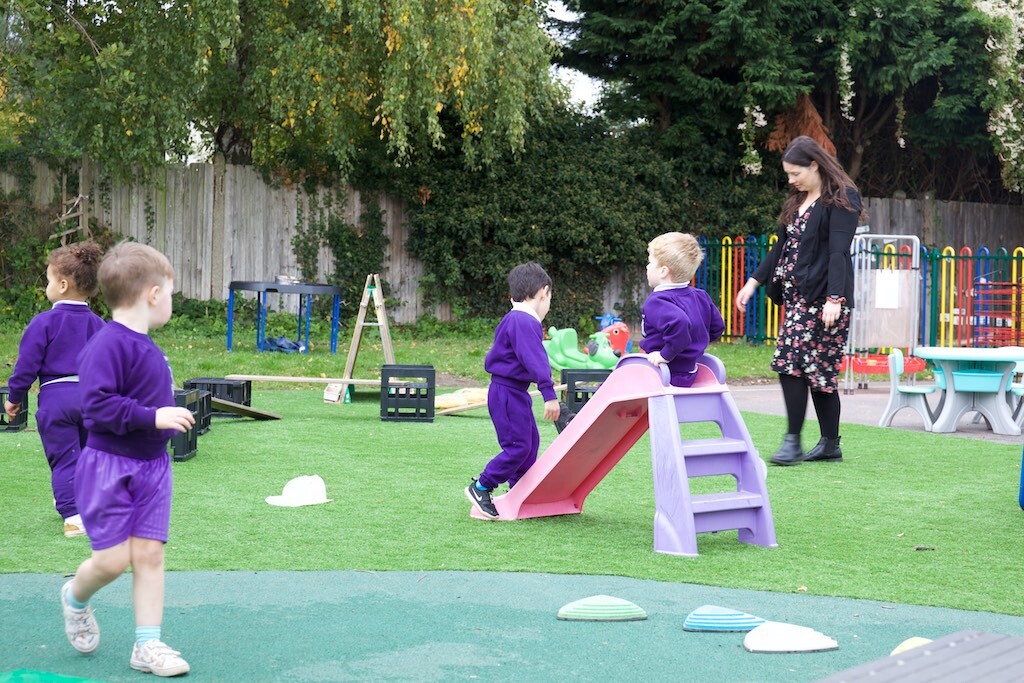
Development Matters
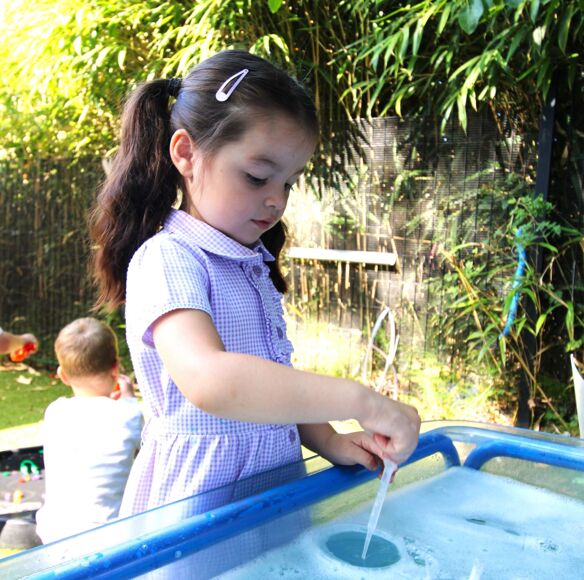
We are committed to providing the best possible foundation for your child's ongoing learning journey. To achieve this, we use a comprehensive framework known as "Development Matters." This framework is designed to help us identify the key developmental milestones that children should reach at different ages. It serves as our roadmap for tracking your child's progress and ensuring that they are on the right track in their early years of education.
Development Matters is an invaluable tool that guides our dedicated staff in tailoring our teaching methods and activities to meet the unique needs of each child. By closely monitoring your child's achievements and areas for growth according to their age and stage of development, we ensure that they are not only meeting important milestones but also thriving and building a strong foundation for their future education.
More information about Development Matters can be found here:
EYFS Areas of Learning and GLD
The EYFS curriculum encompasses seven key Areas of Learning, each designed to provide a well-rounded educational experience. These areas include Communication and Language, Physical Development, Personal, Social, and Emotional Development, Literacy, Mathematics, Understanding the World, and Expressive Arts and Design.
Our goal is to ensure that every child achieves a "Good Level of Development" (or GLD) across these areas. This means that your child will not only reach age-appropriate milestones but will also flourish in their social, emotional, and cognitive development. 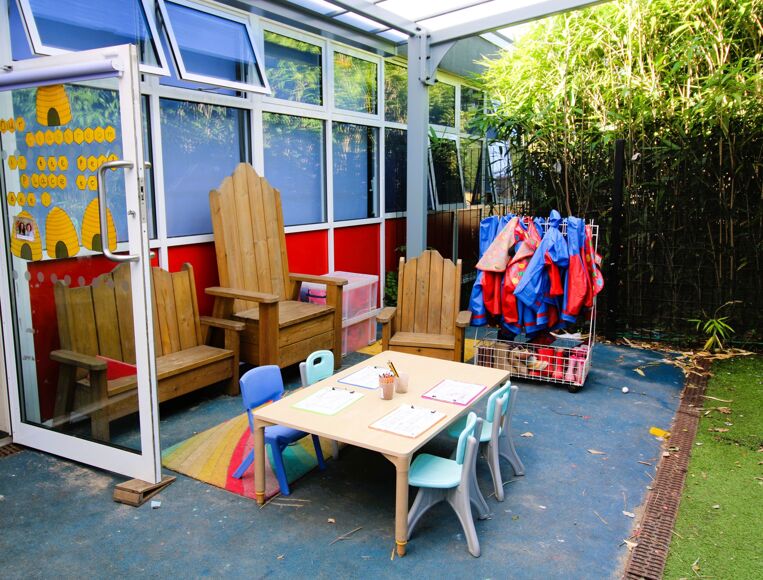
Intent, Implementation and Impact

Intent
We aim to provide a curriculum that meets all aspects of the Statutory EYFS Framework enabling children to;
· Be kind.
· Respect and care for the world around them.
· Know and talk about the world beyond Sayes Court.
· Be confident and competent communicators.
· Work hard.
· Experience a language rich environment.
· Be independent learners.
· Take care of themselves and others.
· Meet the expectations as outlined in the EYFS framework.
· Develop the expected skills for reading, writing and number.
· Learn to read and write through high quality phonics teaching and learning.
· Be prepared for learning beyond the Early Learning Goals and into Key Stage 1.
Implementation
In order to implement the curriculum effectively, we will:
· Work closely with families to gain an understanding of children’s starting points and previous experiences. We use this knowledge to extend learning throughout their time in early years.
· Provide both child and adult led outdoor opportunities daily to experience the world around them.
· Provide visits, visitors and experiences where possible in addition to the enhancement of provision to reflect the wider world.
· Have a daily group story time and repeated reading of key texts.
· Weekly planned circle time sessions with a personal, social and emotional focus using our jigsaw scheme.
· Regular discussion on a healthy body and mind through class discussions, practical PE and Yoga lessons and during mealtimes.
· Provide well-planned activities that promote learning in all areas of the EYFS to help children achieve the ELG and beyond.
· Provide progressive experiences and teaching sequences in order to develop reading, writing and number skills as well as covering all the areas of the curriculum.
Impact
Having provided all children with relevant experiences, children will
· at least meet the expectations as outlined in the EYFS framework
· Be ready for the next stage in their learning. (Key stage one)
· Be independent and inquisitive learners.
· Be able to talk about and communicate their learning experiences.
Schemes:
- Jigsaw (PSED)
- Get Set 4 PE
- Bug Club
- Power Maths
- Developing Experts (Reception)
- Kapow (Reception)
- Discovery RE
Tapestry
We recognise that parents are a child’s first teacher and respect our combined role in nurturing your child. We therefore encourage parental engagement and believe that warm, caring and trusting relationships between staff, children and parents are pivotal to our success. We value your contributions and endeavour to fully involve you in the life of our school.
Part of this is the use of Tapestry, an online learning journal. Staff record the children’s learning onto Tapestry by taking photos and observations of their learning. Parents are able to access their child’s learning journey at home, as well as uploading their own learning to share with the class teacher. This ensures that parents can stay up-to-date with their child’s learning and progress.
More information about Tapestry can be found here: Parents & Carers | Tapestry


